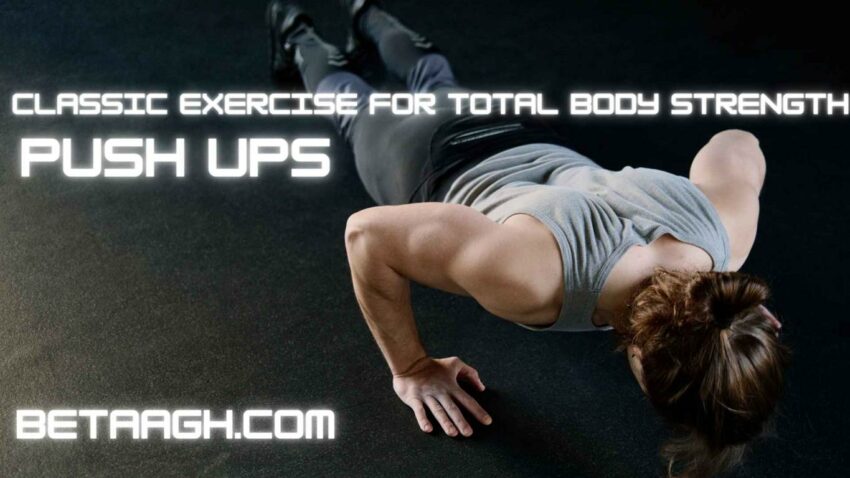Introduction
The push-up, a staple in fitness regimes and military training programs worldwide, is often underestimated in its capacity to build strength, enhance muscle definition, and improve overall athleticism. Yet, this classic exercise offers a plethora of benefits for everyone, from the beginner to the seasoned athlete. In this comprehensive guide, we will explore the mechanics, benefits, variations, and common mistakes associated with push-ups.
Understanding the Push Ups
A push-up is a bodyweight exercise that primarily targets the pectoral muscles, triceps, and shoulders. To a lesser extent, it also engages the core, glutes, and lower back. The exercise consists of lowering your body toward the ground using the strength of your arms and then pushing yourself back up to the starting position.
Types of Push Ups
- Standard Push-Up: Hands are placed slightly wider than shoulder-width apart, and the body is lowered until the chest almost touches the ground.
- Diamond Push-Up: Hands are placed close together under the chest to target the triceps and the inner chest.
- Wide-Grip Push-Up: A wider hand placement focuses more on the pectoral muscles.
- Clap Push-Up: A plyometric variation where you push yourself off the ground and clap your hands before landing.
- Spiderman Push-Up: While lowering down, one leg is brought to the side, engaging the oblique muscles.
Benefits of Push Ups
Total Body Engagement
One of the unique aspects of push-ups is that they engage multiple muscle groups, making them an efficient total-body exercise.
Strengthens Upper Body
Push-ups are particularly beneficial for developing upper body strength, targeting the chest, triceps, and shoulders.
Enhances Core Stability
The plank-like position held during the push-up engages the core muscles, enhancing stability and posture.
Increases Functional Strength
Push-ups mimic natural movements and muscle engagement patterns, thus increasing functional strength useful in daily activities.
Accessible and Versatile
No special equipment is needed, and variations can be easily employed to adjust the difficulty level, making it highly accessible.
Proper Technique
- Starting Position: Begin in a plank position, hands slightly wider than shoulder-width, feet together, and core tight.
- Lowering Phase: Keeping your body in a straight line, lower yourself by bending your elbows until your chest almost touches the ground.
- Pushing Phase: Extend your arms to push your body back to the starting position.
Common Mistakes
- Sagging Hips: Dropping the hips breaks the plank position, disengaging the core, and putting strain on the lower back.
- Flaring Elbows: Elbows flared out to the sides can lead to shoulder issues. Aim for a 45-degree angle between your torso and arms.
- Incomplete Range of Motion: Partial push-ups do not provide the full benefits. Aim to go as low and as high as possible in each repetition.
Incorporating Push Ups Into Your Routine
Push-ups can be incorporated into any workout routine easily. For beginners, 3 sets of 10-12 reps are a good start, while advanced individuals can aim for higher rep counts or incorporate more challenging variations.
Challenges and Variations
Once you master the basic push-up, you can challenge yourself further by adding resistance bands, doing one-arm push-ups, or using push-up bars for deeper range motion.
Conclusion Push Ups
The push-up, although simple in appearance, is a versatile and effective exercise that provides numerous benefits. Its ability to engage multiple muscle groups makes it a comprehensive workout for building strength, improving stability, and enhancing functional fitness. By understanding the proper technique and avoiding common mistakes, you can harness the full potential of this timeless exercise. Whether you are a fitness novice looking for a starting point or an athlete seeking to diversify your training, push-ups are a valuable addition to any fitness program.

